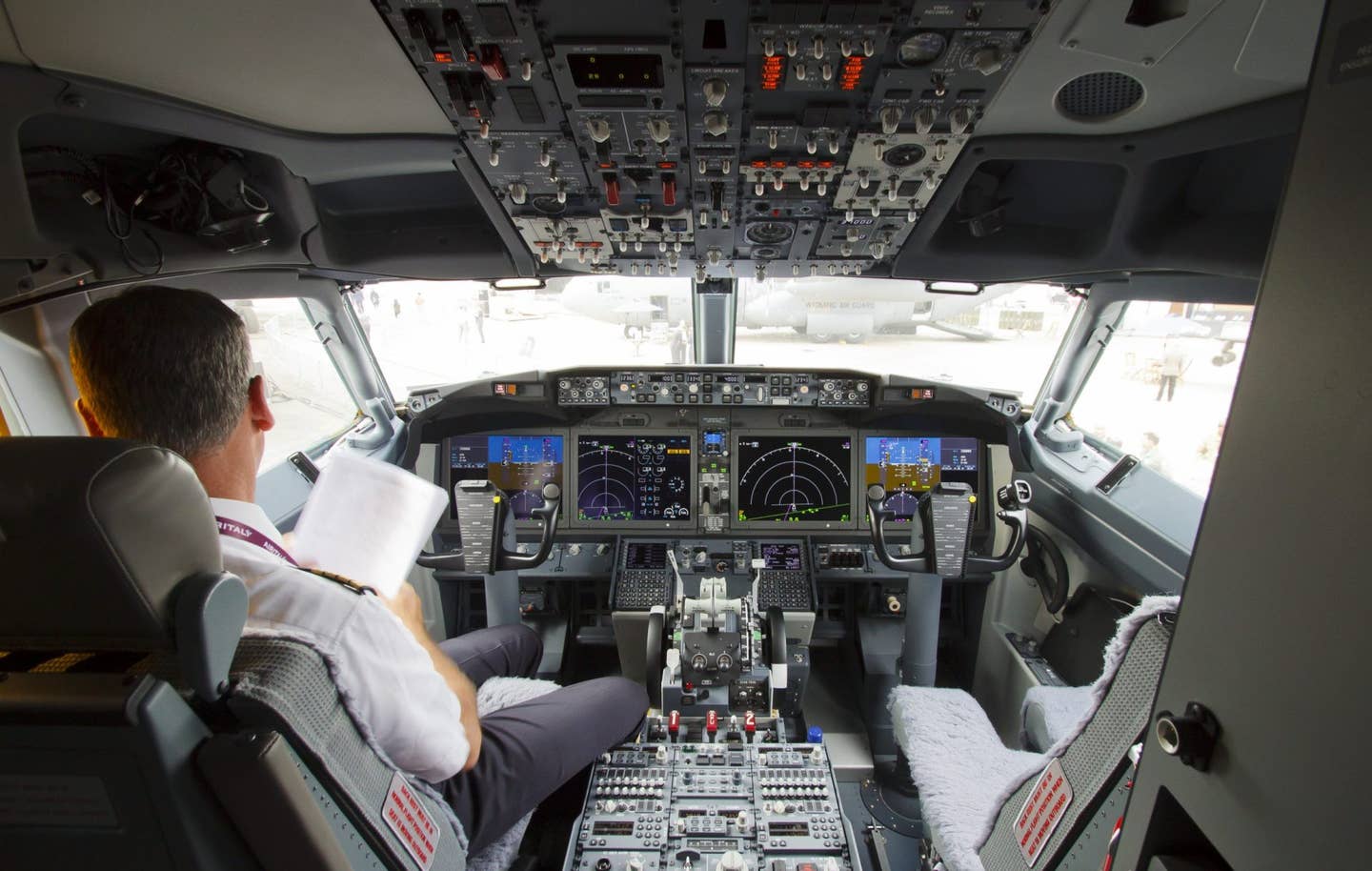How Pilots Predict Severe Turbulence
Severe turbulence events are rare, but they do happen.

Inside the cockpit of a Boeing 737 Max. [Credit: AirlineGeeks | Fabian Behr]
Following the Singapore Airlines severe turbulence encounter last week, many are concerned about other potential events in the future.
Significant turbulence events are not particularly uncommon – a Hawaiian Airlines flight made headlines last year, and a Southwest flight was forced to divert due to turbulence earlier this spring – but the Singapore Airlines flight brought the first turbulence-related fatality in years.
This flight begs the question of how pilots, dispatchers, air traffic controllers, and other stakeholders can predict turbulence and avoid it. Detecting turbulence can be difficult, and not all turbulence is predictable, but there are ways to identify where it could occur.
Convective Activity
The biggest indicator of turbulence is convective activity. When unstable air is allowed to rise – by a lifting force such as a front or a mountain range – its movement becomes what we call turbulence. Pilots can identify where convective action is occurring to pinpoint areas where they could experience turbulence.
The easiest way to identify areas of convective turbulence is to look at clouds. When clouds become vertically developed – when they extend high into the sky in puffs – it is likely that turbulence is present because air needs to be pushed upwards considerably to allow moisture to condense into towering clouds. The same is true with heavy, showery rain: such comes about when air is forced upwards enough to create rain. In heavy storms, the turbulence is compounded by downdrafts that force rain to the surface, passing through the updrafts that allow the storm to develop in the first place.
Mountain Waves
Another place where turbulence is common is over mountain ranges. Mountains provide a natural lifting mechanism for unstable air, allowing air to rise and move around more strongly. This extra movement is often most noticeable the closer you are to the mountains, which is why mountainous areas often have the bumpiest takeoffs and landings. These are commonly referred to as mountain waves.
Pilots have additional tools to help them predict turbulence. In the United States, the Aviation Weather Center – part of the National Oceanic and Atmospheric Administration (NOAA) – creates aviation-specific weather reports and forecasts to help crew identify weather patterns conducive to atmospheric instability.
Most important are inflight aviation weather advisories called AIRMETs, SIGMETs, and Convective SIGMETs. AIRMETs apply mostly to smaller aircraft; they pertain to activies such as areas of low clouds and visibility and moderate turbulence. SIGMETs and Convective SIGMETs apply to all aircraft regardless of size.
Convective SIGMETs are the most applicable for finding areas of extreme turbulence. They may be issued for things such as lines of severe thunderstorms called squall lines; tornadoes; embedded thunderstorms; surface winds greater than 50 knots; and more. These provide pilots with information on the areas most critical to avoid inflight.
New Tools Available
There are also third-party apps that help crews and even passengers, predict where the smoothest rides will be. They take weather and pilot reports to make assessments and predictions about where the smoothest rides will be, allowing for safer, more comfortable trips. They also use real-time data to cross-check the accuracy of their systems.
In addition, pilots are able to use a reporting system – called PIREPs – to warn others of their observations, including icing and turbulence. Crews use these reports and predictions to make decisions about which routes to take, which altitudes to fly, or even whether to fly at all.
Not every bit of turbulence is predictable, though. There is another type of turbulence called “clear air turbulence” that can seemingly appear out of nowhere and will not show up on radar. This type of turbulence tends to take pilots by surprise and does not provide any possibility of avoidance. This is a big reason why pilots and cabin crew tell passengers to fasten their seatbelts whenever seated, even if the seatbelt sign is off: if turbulence suddenly takes an aircraft by surprise, passengers reduce their own risk if they are already strapped in.
Severe and extreme turbulence events are still exceedingly rare in the context of how many commercial flights operate each day.
Editor’s Note: This article first appeared on AVweb.

Sign-up for newsletters & special offers!
Get the latest FLYING stories & special offers delivered directly to your inbox






